|
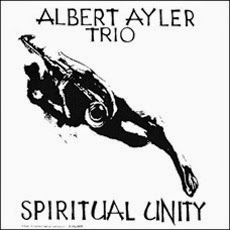 |
ESP's first recording session was on July 10, 1964, in the tiny Variety Arts Recording Studio, just off Times Square. Just before 1 PM, SUNNY MURRAY arrived, a large, genial walrus, moving and speaking with an easy agility that belied his appearance. GARY PEACOCK was next, tall, thin, ascetic looking, and soft spoken, with an introspective and kindly demeanor. ALBERT AYLER was last, small, wary and laconic. The walls of the reception area were covered with Latin album jackets. The engineer quickly set up the mikes and began the session. B sat outside in the reception area with Annette Peacock, Gary's wife. As the music was heard through the open outer door of the control room, felt a sense of jubilation. At one point, the engineer fled the control room for a few minutes, but returned in time to change the tape for the next selection. When the session was over, B learned that it had been recorded in monaural, although he remembered requesting a stereo recording. Happily, the engineer Joe had properly miked and mixed the session, and the recording stands today as a classic of the genre. After the session, the participants sat in a coffee shop next door, while they were paid and signed recording agreements. A few days later, B saw them off on their flight to Europe from Idlewild International Airport for a European tour. DON CHERRY was with them. For the Spiritual Unity 50th Anniversary Expanded Edition, we have added a bonus track: the performance briefly and accidentally substituted for "Spirits" on an early vinyl edition. It is the same tune known as "Vibrations" on the album of that title on Arista/Freedom (AKA Ghosts when issued on Debut) and as "[tune Q]2" on the Revenant box set Holy Ghost. It will be the first time both "Spirits" and "Vibrations" have been on a single ESP edition of Spiritual Unity. We have also just repressed the standard vinyl edition of Spiritual Unity (without the fifth track), but if you purchase it via espdisk.com, it comes with a free download including the bonus track. Personnel Albert Ayler (ts) Gary Peacock (b) Sunny Murray (d) Track Listing 1. Ghosts (1st variation) 2. The Wizard 3. Spirits 4. Ghosts (2nd variation) Press Quotes "Spiritual Unity was the album that pushed Albert Ayler to the forefront of jazz's avant-garde, and the first jazz album ever released by Bernard Stollman's seminal ESP label. It was really the first available document of Ayler's music that matched him with a group of truly sympathetic musicians, and the results are a magnificently pure distillation of his aesthetic. Bassist Gary Peacock's full-toned, free-flowing ideas and drummer Sunny Murray's shifting, stream-of-consciousness rhythms (which rely heavily on shimmering cymbal work) are crucial in throwing the constraints off of Ayler's playing. Yet as liberated and ferociously primitive as Ayler sounds, the group isn't an unhinged mess -- all the members listen to the subtler nuances in one another's playing, pushing and responding where appropriate. Their collective improvisation is remarkably unified -- and as for the other half of the album's title, Ayler conjures otherworldly visions of the spiritual realm with a gospel-derived fervor." - Steve Huey |
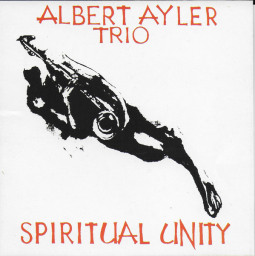 |
|
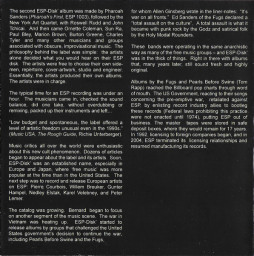 |
|
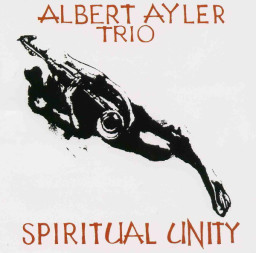 |
|
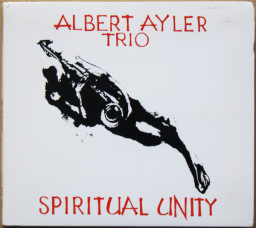 |
|
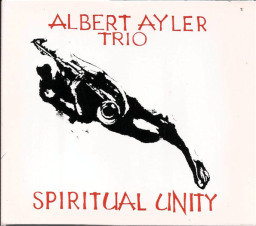 |
|
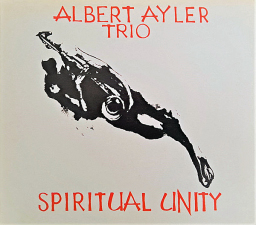 |
|
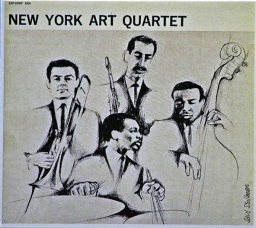 |
|
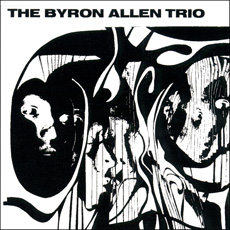 |
New CD ESP 1005 THE BYRON ALLEN TRIO Byron Allen Trio was among the first batch of ESP-Disk's jazz LPs. Recorded on the afternoon of September 25, 1964 at Mirasound Studio in midtown Manhattan, it was Allen's debut. He had been recommended to ESP-Disk' by Ornette Coleman, and one of the tracks, "Decision for the Cole-Man," reflects this connection. Allen and his trio also play in a style somewhat similar to that of Coleman's trio of that era with bassist David Izenson and drummer Charles Moffett, though that's not to say that Allen, bassist Maceo Gilchrist, and drummer Ted Robinson don't display a sound of their own on the four tracks here. In the years since, though Allen made only one other album (and that 15 years later), this LP acquired legendary stature among jazz fanatics. As part of ESP-Disk's celebration of the 50th anniversary of our founding in 1963, we reissued two of the more esoteric items from our extensive catalog of avant-garde jazz that had never been officially issued in the U.S. on CD. This is one of those. Its slipcase format reproduces the LP artwork (with two minor changes: our former addresses is deleted to avoid confusion, and a UPC code is added. Only 750 copies of this album were made, and it will not be reprinted in this format. Personnel Byron Allen (alto sax) Press Quotes Allmusic.com: Four-and-a-half-star review. The Jazz Blog (http://the-jazz-blog.blogspot.com): "Allen playfully explores all routes to the end goal, sometimes stopping briefly along the way to break things apart and then rebuild them again, before heading off down a new path. This might sound very academic, but Allen's playing is firmly rooted in the blues. […] This is another entry in the category of great recordings that deserve wider recognition." |
|
Mini-LP Recorded at Mira Sound Studios New York City, on September 25, 1964. 2013 |
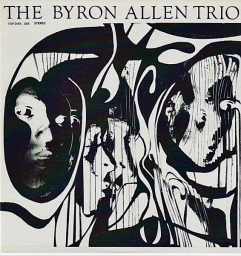 |
|
|
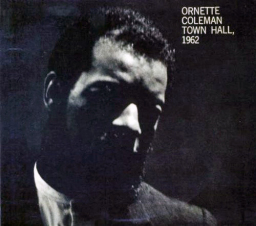 |
|
|
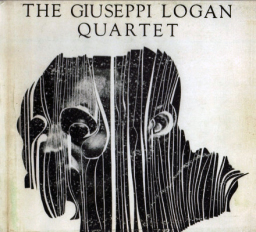 |
|
|
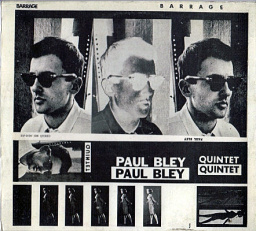 |
|
|
New CD ESP
1009 Bob James Trio /
Explosions Bob James, a recent college graduate, brought ESP a master of a session he had produced, featuring Barre Phillips and Bob Pozar. He chose for the front cover a torn poster he had photographed on a visit to Australia. In 1974, having garnered several gold records, he returned to visit ESP on the ground floor at 290 West End Avenue, in New York City. Lounging in a swing back leather chair, he commented that he thought his ESP album was the best one he had ever made. - Bernard Stollman
Bob James: piano All compositions (Syndicore Music BMI) except Track 2 (Visibility Music BMI)
Press Quotes "Lively and often humorous compositions." -- All Music Guide Credits Recorded May 10, 1965 at Bell Sound Studios, NYC. Engineered by Art Crist. Original cover by Bob James. Original art direction by Jay Dillon. Digital remastering by Douglas McGregor. Design & Layout by Miles Bachman & Peov. Lp/CDLp Photos provided by www.totalshutdown.com |
.jpg) |
2005 |
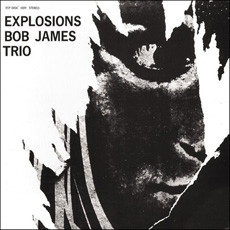 |
|
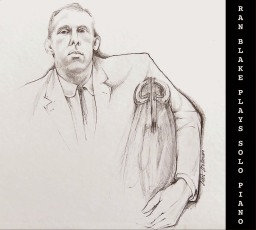 |
New CD ESP 1011 Ran Blake Plays Solo Piano This album, Blake's solo debut, has barely been heard since its appearance in ESP-Disk's first batch of LP releases in 1965. The reissue programs in Europe on ZYX and Calibre did not include it; there was only one very poorly distributed Italian CD issue in the mid-'90s. Fans and aficionados, including members of the jazz press, have clamored for it to be included in our 50th Anniversary Remaster program, citing its musical and historical importance, so here it is! The slight distortion on a few high notes is a small price to pay to hear this jazz master at the beginning of his illustrious career. Born in 1935, Blake developed a style of jazz playing unlike anyone else's by incorporating classical elements (the Impressionists, of course, but Stravinsky, Prokofiev, and Messiaen have also been cited), gospel music (which he experienced first-hand in a Pentecostal church while growing up in Connecticut), Thelonious Monk's highly personal style (back when Monk was still considered a good composer but an overly eccentric pianist), and an abiding love of film noir that influenced the mood of his playing as much as his purely musical influences. Recording opportunities were sparse at first; by age 40 he had released only three albums: his 1962 debut with vocalist Jeanne Lee, The Newest Sound Around (RCA), Plays Solo Piano, and another solo album, The Blue Potato and Other Outrages (Milestone, 1969, long out of print). Since then, fortunately, he has received many more opportunities to get his music heard and has established himself as one of the reigning masters of jazz. Personnel Ran Blake (p) Track Listing 1. Vanguard 2. Stratusphunk 3. Sleepy Time Gal 4. On Green Dolphin Street 5. Eric 6. There'll Be Some Changes Made 7. Good Morning Heartache 8. Sister Tee 9. Lonely Woman 10. Birmingham U.S.A. NYC, May 1, 1965 Press Quotes: "For a debut album Plays Solo Piano was a courageous statement. Clearly in the jazz tradition, and very much a personal, stylistic explosion of the idiom, Blake belonged on ESP Records.." - Steve Wilson, Blurt "…the pianist has honed an aesthetic that is the antithesis of jazz's prevailing pyrotechnic postures. Blake's virtuosity is not expressed through quicksilver speed…but through touch and shading. As a result, Blake has a singular ability to make a single note speak volumes about the human condition, and to turn silence into a withering cry. These attributes are best experienced on his many solo albums. Blake made a signal, early entry into solo piano, recording Ran Blake Plays Solo Piano in 1965 for the usually explosive ESP label. At a time when being a jazz progressive meant spooling out expansive, explosive and ecstatic tomes, Blake achieved what was, for the times, a unique, if not contrarian introspection and intimacy." ? Bill Shoemaker, JazzTimes "…alone at the piano is how Ran Blake reveals the depth of his musical universe most completely." ? John Medeski "Ranks among the music's most brilliant and engaging improvisers" ? Boston Herald |
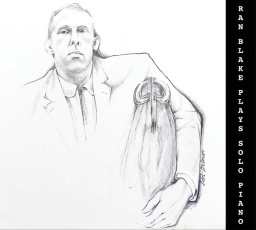 |
|
|
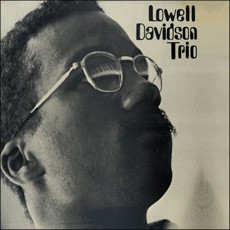 |
Recorded July 27, 1965. Issued in a digipack 2008 |
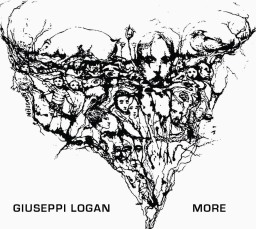 |
New CD ESP 1013 Giuseppi Logan - More More, Giuseppi Logan's second album, has two tracks from the same legendary May 1st, 1965 Town Hall concert, produced by ESP-Disk' owner Bernard Stollman, that gave us Albert Ayler's Bells. This ESP-Disk' 50th Anniversary Remaster edition of More includes previously unissued music from Logan's set that reissue producer Michael D. Anderson discovered at the end of the Bells master tape. The astonishing thing about this 10-minute segment of audio tape is that it is the continuation of the second track, “Shebar,” extending its length to 19 minutes. On the original album, there is a fade, but with the inclusion of this newly discovered segment, the performance continues to the end of the song and of the group's performance. Note: The slight distortion heard momentarily on the added portion exists on the original master tape and could not be corrected, but the historical value in hearing the entire performance warrants its inclusion. 50th Anniversary Remaster - 2013 Personnel Giuseppi Logan (alto saxophone, bass clarinet, flute -1,2,4; piano -3) Don Pullen (piano -1,2,4) Reggie Johnson (bass -1,2) Eddie Gomez (bass -4) Milford Graves (drums, percussion -1,2,4) Track Listing 1. Mantu 2. Shebar 3. Curve Eleven 4. Wretched Sunday The Town Hall, NYC, May 1, 1965 |
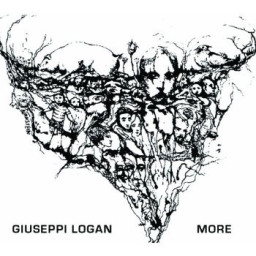 |
2013 'This is the ESP-Disk' 50th Anniversary edition of More.' Track 2: including 10 minutes of previously unreleased music (found at the end of of the Albert Ayler 'Bells' master tape), albeit with a slight distortion which exists on the original master tape and could not be corrected. Tracks 1-2 recorded at Town Hall [May 1, 1965] Tracks 3-4 recorded by Bell Sound [May 1965] |
|
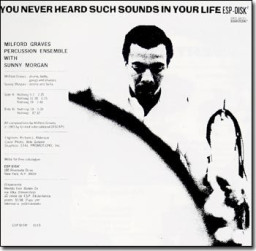 |
2003 CD-R |
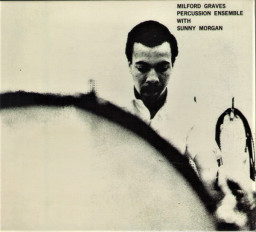 |
|
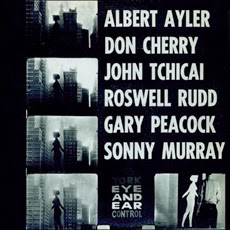 2008 |
New Vinyl New York Eye & Ear Control Re-mastered from original tapes Digital download included It isn't strictly an Albert Ayler album but a very interesting collaborative freely improvised soundtrack project for Michael Snow's film of the same name. Recorded in July 1964 by Albert Ayler, Don Cherry, Roswell Rudd, John Tchicai, Gary Peacock and Sunny Murray. Liner notes, photos and more... digitally remastered from the original tapes. . Michael Snow, the Toronto based film maker and pianist and catalyst for free improvisational performers everywhere; painter, sculptor and record producer, and the pride of Canada, used the image of pianist-composer Carla Bley as the inspiration for ah art film, NY EYE & EAR CONTROL. For his sound track, he assembled a group of ESP artists in his loft, and recorded them on July 17, 1964. Personnel Albert Ayler: tenor sax Don Cherry: trumpet, cornet John Tchicai: alto saxophone Roswell Rudd: trombone Gary Peacock: bass Sunny Murray: drums Track Listing 1. Don's Dawn 1:05 2. A Y 21:24 3. ITT 23:22 All compositions by Albert Ayler (Syndicore Music BMI) Credits Recorded in NYC, on July 17, 1964 by Michael Snow for use as the soundtrack to his film "Walking Woman" (aka New York Eye and Ear Control). Original cover design by Michael Snow. Production Manager: Tom Abbs. Analog to digital transfer by Michael D. Anderson. Digital remastering by Douglas McGregor. Design & Layout by Miles Bachman & Michael Sanzone. Press Quotes "Something of a missing link between Ornette Coleman’s “Free Jazz” and John Coltrane’s “Ascension,” this recording is superior to those performances in its freer, truly group-oriented format, with no specified soloists and accompanists. Joined by the trumpeter and cornetist Don Cherry, the saxophonist John Tchicai, and the trombonist Roswell Rudd, as well as by Peacock and Murray, Ayler guides the group through the powerful authority of his playing; the riotous revelry joins the joy of New Orleans traditions to the urbane furies of the day." - Richard Brody, The New Yorker "Ayler's wide-vibrato wail, gutbucket honks and folksy abstractions are all here, but they're constantly goading and commented on by Tchicai's slinky repetition, Rudd's braying tailgate and Cherry's darting bebop shards." - Clifford Allen, All About Jazz |
.jpg) |
|
|
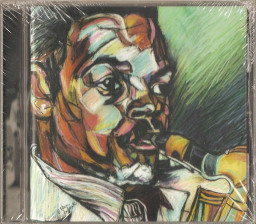 |
2006 Reissue, Remastered |
|
2006 Reissue, RemasteredReissue, Remastered |
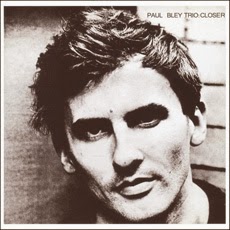 |
ESP 1021(Neww Neww CD) Paul Bley Trio - Closer When Oscar Peterson moved from Montreal to New York in 1949, the 17-year-old Bley took over his residency at the Alberta Lounge on Oscar's recommendation; in his twenties, he played with Charlie Parker. Bley started incorporating maverick pianist Lennie Tristano's approach to improvisation and collaborating with Charles Mingus, and in 1958 in Los Angeles Bley famously put together a band with Ornette Coleman, Don Cherry, Charlie Haden, and Billy Higgins. His move into free improvisation in the groundbreaking Jimmy Giuffre 3 brought him acclaim. After moving to New York, he was one of the performers at the Cellar Cafe in Bill Dixon's "October Revolution in Jazz" four-day festival, which led to Bley being one of the co-founders shortly thereafter of the Jazz Composers Guild. It was in the midst of that fabled month that Bley recorded his first LP for ESP-Disk' (sixth overall to that point), Barrage. Bley returned to the studio for his second ESP-Disk' LP a bit less than two months later. Closer finds Bley again heavily featuring then-wife Carla's compositions; she's credited on seven of the ten tracks, including two also heard on Barrage, "Batterie" and "And Now the Queen." They sound quite different on this quieter trio date, and the performances are more concise (no track breaks the 3:30 mark). Paul included one of his own tunes, "Figfoot," as well as Ornette Coleman's "Crossroads" and future wife Annette Peacock's "Cartoon." Closer features the distinctive pianism we've come to associate with Bley in one of its earliest recorded manifestations. The other players are fellow Jimmy Giuffre 3 member Swallow and, in his recording debut, Altschul. Personnel Paul Bley: piano Barry Altschul: percussion Steve Swallow: bass Track Listing 1. Ida Lupino 2:55 2. Start 2:21 3. Closer 3:28 4. Sideways In Mexico 2:56 5. Batterie 3:17 6. And Now The Queen 2:17 7. Pigfoot 3:23 8. Crossroads 2:31 9. Violin 2:57 10. Cartoon 2:16 All compositions by Carla Bley, Alrac Music BMI except Ida Lupino (Carla Bley and Terry Adams, Syndicore/Alrac/farnsley Music BMI)), Figfoot (Paul Bley, Pablo Music & Syndicore Music BMI), Crossroads (Ornette Coleman, ESP-Disk' Music BMI) and Cartoon (Annette Peacock, Pablo Music BMI). Credits Recorded NYC, December 12, 1965. Produced by Paul Bley at RLA Studios in New York City. Engineered by Richard L. Alderson. Original art direction by Jay Dillon. Digital remastering by Michael D. Anderson. Press Quotes "...a wonderful, poetic anomaly. In an era where velocity and raw story-telling were required currency, Closer had a lyrical, Haiku-like simplicity ? recalling the Japanese poet Basho’s line 'something like a hidden glimmering.' […] In Bley’s hands the freedom of jazz manifests itself in the negotiating of borders and edges, between skittering, conversational interplay, serene space and the heart-strained melodic intimacy on the part of his band mates " ? Matt Fleeger, The New Thing, KMHD-FM "The interplay between these three is startling in how tightly woven they are melodically and harmonically." - Thom Jurek, All Music Guide "In the final analysis, however, it is his vision that propels the music forward. He fills it with vigor and dynamism, with space and lyricism; nothing is out of focus, every challenge is within his grasp. His eloquence is shaped by his ability to balance silence with sound, as well as his penchant for, and skill with, unusual phrasing." - Jerry D'Souza, All About Jazz |
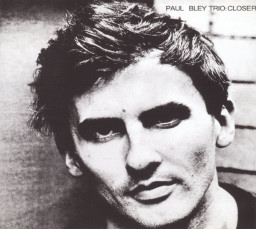 |
|
|
|
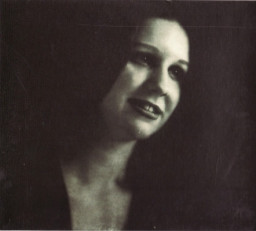 |
|
|
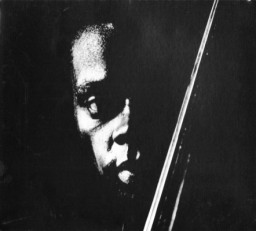 |
|
|
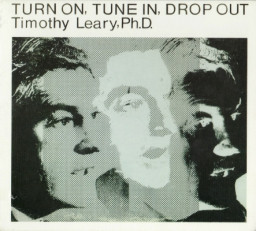 |
|
|
New CD
ESP 1029 Charles Tyler - Charles
Tyler
Ensemble Charles Tyler, from Albert Ayler's band, makes a startling statement on his debut solo record. His group, featuring an unusual instrumentation of cello, bass, drums, orchestra vibes, and saxophone, plays through his original compositions and showcases some heated solos. Although primarily known as a baritone sax player, Charles Tyler is featured on alto sax yet his sound and concept are fully evident on this record.Personnel Charles Tyler: alto sax
Press Quotes "Alto and baritone saxophonist Charles Tyler, one of the major voices in avant-garde jazz, began playing with Albert Ayler in Cleveland in the early 1960s, and soon followed Ayler east to take part in New York's fertile jazz scene. While continuing to play with Ayler in NYC (appearing on both Bells and Spirits Rejoice), Tyler also began leading his own sessions, and in 1966 ESP-Disk released his fiery debut as front man, the Charles Tyler Ensemble, featuring Charles Moffett on orchestra vibes, Joel Friedman on cello, Henry Grimes on bass and Ronald Shannon Jackson on drums." - Forced Exposure |
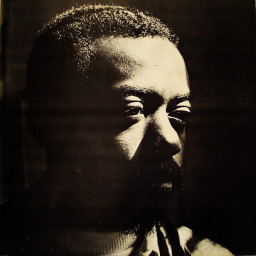 |
2009 Remastered Digipak |
|
New CD
ESP 1030 Sonny Simmons - Staying
On The Watch
The noted West Coast composer makes his ESP debut accompanied by his then wife, Barbara Donald, on trumpet, Teddy Smith on bass, John Hicks on piano, and Marvin Pattillo on percussion. Recorded in August 1966, Staying on the Watch is an important infusion of straight-ahead and avant jazz. Barbara Donald is a superb trumpeter who has made a stern contribution to the legacy of women performers and has been widely written about. Also, pianist John Hicks, who makes his New York debut on the record, went on to become one of the most prolific pianists in jazz. Personnel Barbara Donald: trumpet 2.A Distant Voice3.City Of David 4.Interplanetary Travelers
Press Quotes “Altoist Sonny Simmons' debut as a leader is a typically stimulating and dense ESP blowout. Performing in a quintet with trumpeter Barbara Donald, the up-and-coming pianist John Hicks, bassist Teddy Smith and drummer Marvin Pattillo, Simmons stretches out on four colorful and mostly free-form originals. The intense set still sounds quite advanced over three decades later.” – Scott Yanow (All Music Guide) “Always a volatile personality, Simmons cut his music in the late 60s with a finely honed edge. On ‘A Distant Voice’ he pushes his alto into English horn territory (which Simmons would later regularly employ). Then-wife Barbara Donald on trumpet is key to the band’s forceful sound. Staying on the Watch marks the debut of pianist John Hicks, who brings ‘City of David’ to a rousing finish. – Jeff Stockton (All About Jazz) |
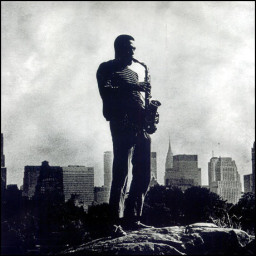 |
2010 |
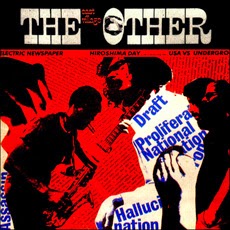 |
New CD ESP 1034 Various Artists - The East Village Other (EVO) This album was intended to raise funds for The East Village Other, an underground newspaper. This is the first North American CD release of the "electric newspaper," an archetypal Sixties counterculture 'happening' from August 6, 1966, this is also the first edition anywhere since the original vinyl to include the lengthy closing track, "Interview with Hairy." A legendary all-star cast of performers got together to make an anti-war collage of words and sounds that defies mere track listings?one of the elements is "Silence" by Andy Warhol, which, contrary to at least one wrong-headed European reissue, is not actually a separate track (so don't write in complaining about its supposed absence): For some period of time, while the radio played and/or other performers did their things, Andy stood in the studio silently. Hey, it was the '60s. It's a concept, man. Personnel Steve Weber (g, vo) Gerard Malanga, Ingrid Superstar (performer) Velvet Underground Marion Brown (as) Scotty Holt (b) Ronald Shannon Jackson (d) Allen Ginsberg (spoken word) Peter Orlovsky (performer) Peter Rawson (g) Tuli Kupferberg, Viki Pollon (vo) Ishmael Reed (spoken word) Andy Warhol (silence) Track Listing 1. "Luci's Wedding" by plastic clock radio 2. "If I Had Half a Mind" by Steve Weber 3. "Gossip" by Gerard Malanga and Ingrid Superstar 4. "Noise" by The Velvet Underground 5. "Jazz Improv" by Marion Brown, Scott Holt, & Ronald Shannon Jackson 6. "Mantras" by Allen Ginsberg & Peter Orlovsky 7. "Luci's Wedding" (cont) by plastic clock radio 8. "Love and Ashes" by Tuli Kupferberg 7 Viki Pollon, with Peter Rawson on guitar 9. "The Free Lance Pall Bearers" by Ishmael Reed 10. "Interview with Hairy" by Ken Weaver & Ed Sanders RLA Sound Studios, NYC, August 6, 1966 Press Quotes: "ESP-Disk released some freaky discs. That was kind of the whole idea of the label, in fact. But of all the discs they released, none were freakier than The East Village Other Electric Newspaper. A mind-bending sonic collage, [it] consists of a radio report of First Daughter Luci Baines Johnson's wedding on August 6, 1966 (coincidentally -- and prophetically, to the staff of the pioneering underground newspaper The East Village Other -- the 21st anniversary of the bombing of Hiroshima) overlaid with a variety of underground oddities. These include a song fragment by the Holy Modal Rounders' Steve Weber, a two and a half minute improvisation by free jazz saxophonist Marion Brown, a song by Tuli Kupferberg of the Fugs, a ten-minute chant by Allen Ginsberg and Peter Orlovsky, a reading by Ishmael Reed from his novel The Freelance Pallbearers, a gossip section by Warhol superstars Gerard Malanga and Ingrid Superstar, and, most famously, a 1:44 instrumental by the Velvet Underground aptly titled 'Noise.' This was the very first Velvets recording to be released. Obviously, this is much more of a curio than anything anyone will want to listen to regularly, but, as curios go, it's oddly fascinating." ? Stewart Mason, All-Music Guide |
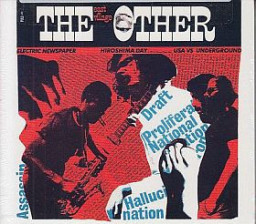 |
2013 An audio collage based on a radio broadcast about the wedding of Luci Johnson (daughter of U.S. President Johnson). Between track 9 and 10 indicated "Silence by Andy Warhol", but not given a track. |
|
New CD ESP 1040 Marion Brown / Why Not ? Alto saxophonist Marion Brown played on John Coltrane's Ascension, and has worked closely with leading figures of the jazz avant-garde, including Sun Ra and Archie Shepp, however, his lyrical, and even tender tone sets him apart from the more strident voices of his musical generation. "Why Not" represents some brilliant early work by Brown, which is both soulful and wildly adventurous. After Why Not Brown went on to record over a dozen records as a leader. Personnel Marion Brown (as) NYC, October 23, 1966
Press Quotes
|
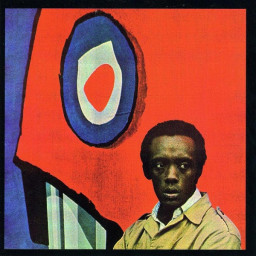 |
|
|
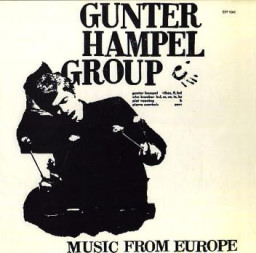 |
|
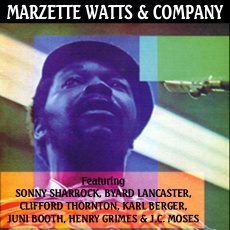 |
New CD ESP 1044 Marzette Watts And
Company The Alabama born saxophonist/clarinetist had a short lived career as a member of the sixties avant-garde, but achieved legendary status for the company he kept in his Cooper Square loft where the likes of Ornette Coleman, Cecil Taylor, Don Cherry, Archie Shepp, and Pharoah Sanders often congregated. This debut date is best known for the presence of players, who like Watts, were to become renowned for the rareness of their recorded output, including Sonny Sharrock, Byard Lancaster, Clifford Thornton, Karl Berger and Henry Grimes.
|
|
2012 Reissue |
|
Recorded December 8th, 1966. Promo copy in slim jewel case with booklet. No barcode. 2012 |
|
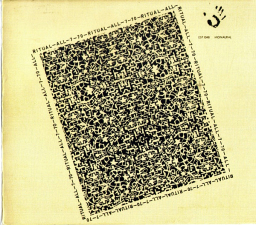 |
|
|
New CD ESP
1049 Gato Barbieri / In Search of the
Mystery Saxophonist Leandro "Gato" (Cat) Barbieri, the pride of Argentina, had a hugely successful career that included massive hits -- but he got his start on ESP-Disk' with this muy caliente session of no-holds-barred free jazz blowing.
Gato Barbieri: tenor All compositions by Gato Barbieri, Syndicore Music (BMI). Credits Recorded March 15, 1967 in NY NY. Reissue production Manager: Adam Downey. Digital remastering by Douglas McGregor. Reissue design & layout by Miles Bachman.
"But if there is a concept here, it’s extremely simple: you never heard such sounds in your life." - Clifford Allen, Bagatellen
|
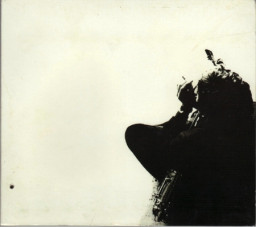 |
|
|
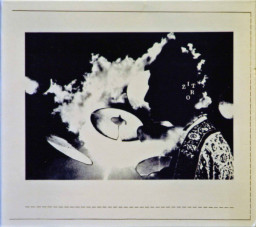 |
|
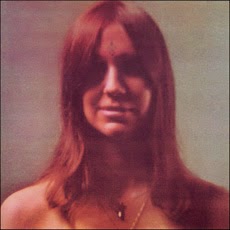 |
New CD ESP 1055 Patty Waters - College Tour In the Spring of 1966, ESP was given a grant by the New York State Council on the Arts, to tour the five colleges in the state with music departments. Artists for this tour included the Sun Ra Arkestra, Burton Greene, Patty Waters, Giuseppi Logan and Ran Blake. Accompanied by an all star backup group from among the participants, Patty's performances resulted in the album, "College Tour", her second recording for ESP-Disk'. The album expands upon the vocal acrobatics that were heard on her first recording, "Sings". "College Tour" won second place for Vocal Recording in Jazz and Pop Magazine in 1970. Patty Waters is internationally recognized as one of the first major avant-garde vocalists. Her ESP-Disk' recordings cemented her reputation as a vocal innovator, and according to liner notes and public opinion, one whose influence extended beyond jazz to Yoko Ono and Diamanda Galas. Personnel Giuseppi Logan (fl -1,2,4,6,7) Dave Burrell (p -1,2,4,6,7) Burton Greene (p -3) Ran Blake (p -5) Perry Lind (b -1,2,4,6,7) Steve Tintweiss (b -3) Scobe Stroman (d -1,2,4,6,7) Shelly Rustein (d -3) Patty Waters (vo) Track Listing 1. Song Of Clifford 2. Hush Little Baby With Ba Ha Bad 3. Wild Is The Wind 4. Prayer 5. It Never Entered My Mind 6. Song Of Life With Hush Little Baby 7. Song Of The One (I Love) Or Love, My Love "The New York State College Tour", NYC, April, 1966 * part of ESP-Disk' ESP 4019. |
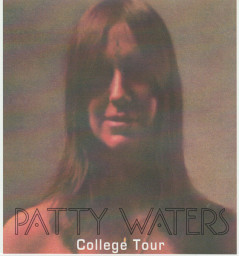 |
|
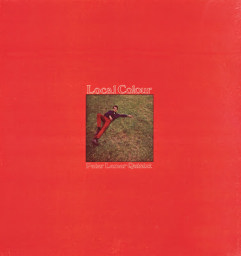 |
New CD ESP 1057 Peter Lemer - Local Colour British pianist Peter Lemer studied with Jaki Byard, Paul Bley, and Bill Dixon, so his roots in jazz are strong. His lengthy and distinguished career has found him in a wide variety of settings. As an avant-garde jazz pianist, he recorded with Spontaneous Music Ensemble; in the jazz fusion realm, he was a member of Gilgamesh and Paraphernalia; as a progressive rock keyboardist, he played with Gong, Baker Gurvitz Army, the Mike Oldfield Group, Seventh Wave, and In Cahoots. Sideman credits include work with Annette Peacock, Harry Beckett, and more. Surprisingly, Local Colour - his debut recording - is Lemer's only album as a leader. Recorded in London in 1966, before jazz fusion or prog-rock even existed, it belongs in the collection of anyone who cares about the British jazz scene, and not only because of Lemer's talents. Everyone in this quintet went on to notable achievements. This was sax great John Surman's recording debut; he is now arguably the premiere British jazz saxophonist, with a prolific and much-praised discography. Chances to hear the also scintillating sax sound of the more obscure Nisar Ahmad Khan (AKA George Khan) in a jazz context are much rarer, though prog-rock fans may remember his appearance on Robert Wyatt's Ruth Is Stranger than Richard and his work with Cream lyricist Pete Brown and The Crazy World of Arthur Brown. Drummer Jon (then going by John) Hiseman had already established himself on the British jazz scene by co-founding the New Jazz Orchestra in 1964; two years after the Local Colour session he started Colosseum, one of the most successful British jazz-rock bands, and he even collaborated with Andrew Lloyd Webber on the musical Cats. Bassist Tony Reeves had had a hit single in 1965 with Sounds Orchestral ("Cast Your Fate to the Wind"); after a brief stint with John Mayall's Bluesbreakers, Reeves joined Hiseman in Colosseum; he was also a member of Greenslade and Curved Air in addition to session work with Fairport Convention singer Sandy Denny and guitarist John Martyn. That's a whole lot of talent in the Peter Lemer Quintet! Together, they make a sort of inside/outside jazz that doesn't abandon themes and harmony but is still quite freewheeling when it wants to be. A lost classic, revived with this 50th Anniversary Remaster rESPlica Edition in a 750-copy limited edition slipcase copied from the original LP art. Personnel Nisar Ahmad Khan (tenor saxophone) John Surman (baritone saxophone, soprano saxophone) Peter Lemer (piano) Tony Reeves (bass) Jon Hiseman (drums) Track Listing 1. Ictus 2. City 3. Frowville 4. In The Out 5. Carmen 6. Enahenado London, England, 1966 Press Quotes "...another ESP-Disk gem back from the massive archives of one of the finest labels in avant-garde jazz." - Forced Exposure |
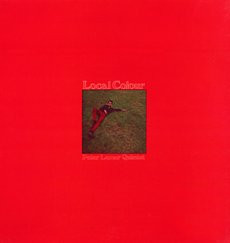 |
2013 Originally released in 1968 [ESP Disk ESP 1057] Recorded 1966 in London EHK Productions 50th Anniversary Remastered Edition 1963-2013 |
|
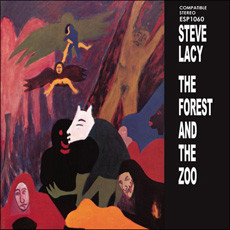 |
2008 Recorded in concert, October 8, 1966 at "Institute Di Tella", Buenos Aires, Argentina |
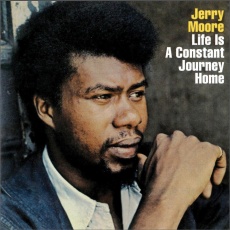 |
New CD ESP 1061 Jerry Moore - Life is a Constant Journey Home This one is so legendary that we don’t have to describe it ourselves. All Music Guide’s Ron Wynn writes: “Here's a classic case of a great release coming from a most unexpected source. Moore did a number of reasonably effective soul and blues singles on regional labels, then recorded this seven-track concept work for the legendary bohemian New York label ESP Disk, best known for '60s underground rock bands like the Fugs, the Godz and Pearls Before Swine. Life Is a Constant Journey Home contains several remarkable protest and topical tunes, each sung with grit and conviction. “The Ballad of Birmingham” revisits the horrible bombing incident in 1963 that killed four little girls, while "Winds of Change" offers hope and inspiration to those battling for justice, and "Life Is a Constant Journey" takes almost a folkie musical approach while discussing the impact of fate and personal decisions. Like so many other remarkable ESP releases, this one got limited distribution and remains a collector's oddity, although it still stands as a fine piece of singer/songwriter commentary and vocal polemic.” Moore is supported on this album by well-known instrumentalists Eric Gale, Bill Salter, Warren Smith, and Ralph MacDonald. Personnel -------------------------------------------------------------------------------- Eric Gale (g) Jerry Moore (g, vo) Bill Salter (b) Warren Smith (d) Ralph MacDonald (cga) Track Listing -------------------------------------------------------------------------------- 1. Ballad Of Birmingham 2. Winds Of Change 3. Let Go, Reach Out 4. Life Is A Constant Journey Home 5. Drugged 6. Anti Bellum Sermon 7. This Is My Time Impact Studios, NYC, August, 1967 |
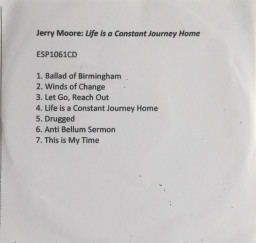 |
|
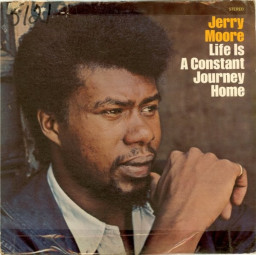 |
2013 Remastered Edition |
|
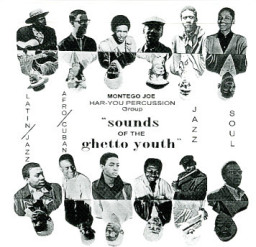 |
|
|
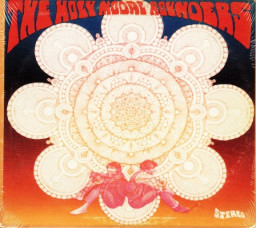 |
|
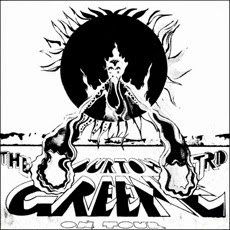 |
New CD ESP 1074 Burton Greene - The Burton Greene Trio On Tour First-ever American CD edition of this lost classic, recorded "live" during ESP's 1966 New York State College Tour. The "piano harp" credit is Greene's way of noting that he plays inside the piano, directly on the strings ? the first jazz pianist to do so on record, taking a page from avant-gardist Henry Cowell's book. In his notes to the original LP, included complete in this reissue, Greene writes, "The tour found people largely unexposed to this music. They were often shaken up. Some were deeply moved. Those who came for a total body and soul experience were rewarded with the vibrations. The people who constantly needed the theoretical approach or 'road maps' were not.... Like the time a boat load of people left the hall at a lecture following a performance at Fredonia State Teacher's College. We had the audacity to tell people that not only was our approach to music valid but that often the results were as musically complex and often more so than, let's say Beethoven. Throughout the tour we continued to denigrate the idea of the 'sacred cow' and tried to encourage people to learn to do their own thing rather than to follow us blindly and mimic our techniques etc." Personnel Burton Greene (p, piano harp) Steve Tintweiss (b) Shelly Rusten (per) Track Listing 1. Bloom In The Commune 2. Ascent 3. Tree Theme 4. Transcendence "The New York State College Tour", NYC, April-May, 1966 Press Quotes "Pianist Burton Greene ('37) is a major figure in the free jazz revolution of '60s New York." ? Portland Monthly "Pretty far out work from pianist Burton Greene...Steve Tintweiss on bass and Shelly Rusten on drums…give Burton plenty of space to stretch out in an open-ended, freely improvised sort of way. There's a very spacious, dynamic style to the music ? with oblique segments interspersed with more wide open ones, and occasional crescendos with wide sheets of sound." ? DustyGroove.com |
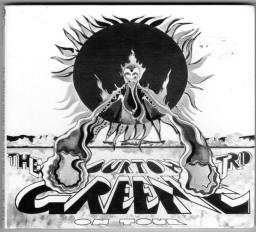 |
|
|
New CD ESP 1080 Karel Velebny / SHQ In February, 1968, as the false Spring of hope was rising in occupied Czechoslovakia, ESP instructed Karl Velebny to record his group of improvisers during their upcoming tour of Germany. In April, 1968, the clandestine project was completed. Karel survived a terrible auto crash and sent photographs to ESP, which were utilized on the LP cover as a symbolic reference to the plight of the Czech people. Personnel Jiri Stivin: alto sax, flute, recorder All compositions by Karel Velebny except Beetles On The Head by Jiri Stivin (ESP Disk' Ltd. ASCAP). Credits Recorded in Germany 1968. Production Manager: Tom Abbs. Tape transfer & mastering by Stephen Walcott. Design & layout by Miles Bachman, Michael Sanzone & Fumi Tomita.
"Velebny shows how imagination and artistry make compact bedfellows. His discography is sketchy and his music is not easily available, which makes this CD one to treasure." "It is a memorable set of music that tears up the walls between the new thing of the sixties and the bebop of Bird that much of the '60s music sought to deconstruct." |
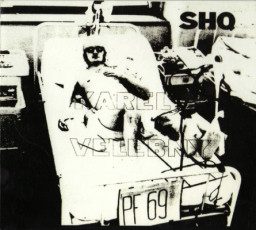 |
|
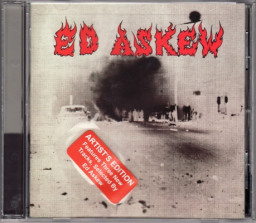 |
|
|
New CD ESP
1095 Levitts / ...We Are The Levitts 13 year old guitarist Sean Levitt was improvising on a borrowed guitar at the Central Park fountain for a young attentive audience when he was spotted by ESP. While being auditioned, Sean mentioned his musical family, which included his father, drummer Al Levitt; his mother, vocalist Stella Levitt; his 15-year-old drummer brother George; his singing sisters Michele (16), Minou (14) and Teresa (11); and his two younger brothers Billy (9) and Robin (6), who had not as yet chosen their instruments. Although Billy was convinced that if he could get his hands on a flute, he could play it.
The Levitt Family: All songs 2008 ESP-Disk' Music ASCAP except Then Was Then (Denslow Music Inc. ASCAP, Notable Music Co. Inc. ASCAP), Springtime (Primavera) (Mongo Music BMI), O Amor Em Paz (Ipanema Music ASCAP), and Spring Can Really Hang You Up The Most (Wolfland ASCAP). Credits Recording Engineer, Sound Effects by Onno Scholtze. Color Photos by Sandra Stollman. Production Manager: Tom Abbs. Tape Transfer & Mastering by Steven Walcott. Design & Layout by Miles Bachman, Michael Sanzone and Fumi Tomita.
Across the date, Stella acquits herself through the guises of psych-folk, Astrud Gilberto impressions, and languid small-hours vocal jazz with equal and bare honesty. And that honesty is part of what gives this anti-war, flower-encrusted music its bite, though being supported by a crew of outstanding improvisers doesn’t hurt the Levitts’ cause either. "Another little gem from ESP Disk." - Damian Rafferty, FLY Global Music Culture This is a delightful album, reflective of the time, progressive and diverse in many ways, and worth a revisit here, or as some sort of a reunion later in this life of this interesting musical family. – Michael G. Nastos, All Music Guide |
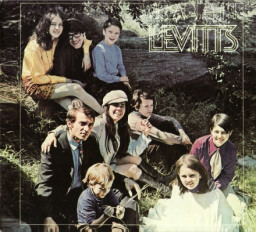 |
|
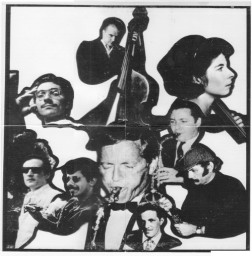 |
|
|
New CD ESP 1098 MIJ / Yodeling Astrologer Recorded in three hours on January 12, 1969 after ESP-Disk' founder Bernard Stollman heard Jim Holmberg (MIJ is Jim backwards) performing in Washington Square Park. Personnel MIJ (Jim Holmberg): vocals and guitar
All words and music by Jim Holmberg (Syndicore Music, BMI) Credits Recording engineer: Onno Schultze |
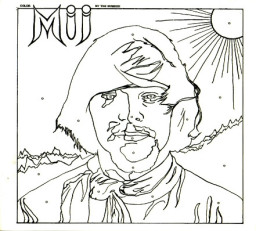 |
|
|
New CD ESP 1099 Erica Pomerance / You Uset To Think Erica Pomerance is a Canadian documentary film maker, poet and singer songwriter. In December, 1968, she assembled a diverse group of musicians to record her debut album, with engineering by Onno Scholtze. The late Trevor Koehler played alto sax. Gail Pollard, now also deceased, played flute. Dion Grody, Lanny Brooks and Craig Justen, of Octopus fame, assisted. Billy Mitchel, the legendary guitar virtuoso, Don Coopersmith, Ron Price on lead guitar, Richie Heissler on rhythm guitar, and Tom Moore on flute, an eclectic mix of classical, improvisational, folk and rock musicians. Personnel Erica Pomerance, Trevor Koehler, Gail Pollard, Dion Grody, Lany Brooks, Craig Justen, Billy Mitchel, Don Coopersmith, Ron Price, Richie Heissler, and Tom Moore All words and music by Erica Pomerance except for lyrics of Burn Baby Burn by Lee N. Bridges (ESP-Disk' Music, ASCAP) Credits Recorded December, 1968 Press Quotes "Pomerance shook things up, taking what she wanted, dissecting the past and reconstructing her own tightly woven original folk blast. Groovy flutes, buzzing sitar, minimalist piano, bongos, sax squawk, and tambourines create a vision-drenched psychedelic stew -- with Pomerance's voice wavering over the surface like a skipping stone." - Cary Loren (Blastitude)
|
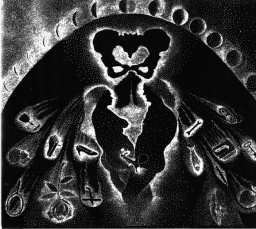 |
|
|
New Vinyl Cromagnon - Cave Rock Already commercially successful as tune-smiths for teenyboppers, Austin Grasmere and Brian Elliot approached Bernard Stollman looking to focus their talents on something more original and unrestrained. Stollman asked, “What would be your theme?” and Elliot replied: “Everything is one.” Bernard said, “Go do it.” What followed was Cromagnon's (Grasmere, Elliot and the Connecticut Tribe) non-linear journey through the subconscious, weaving together bizarre instrumentation and meter with a psychotic blending of musical styles. Bagpipes, pounding percussion, blood-curdling yelps, chanting, laughing, and billowing subterranean rumblings create the otherworldly soundscape that is Cave Rock. Heralded as one of the best freak-out records of all time, Cave Rock was ridiculously ahead of its time and brings to mind the savage sound-fuckery of Nurse with Wound and Throbbing Gristle as well as the hallucinations of early Red Krayola. Personnel Austin Grasmere (lead vocals, music) Brian Elliot (lead vocals, music) Connecticut Tribe: Peter Bennett (bass) Jimmy Bennett (guitar, bagpipes) Vinnie Howley (guitar) Sal Salgado (percussion) Nelle Tresselt (honorary tribe member) Mark Payuk (vocals) Gary Leslie (vocals, multi-sound effects) Track Listing 1. Caledonia 2. Ritual Feast Of The Libido 3. Organic Sundown 4. Fantasy 5. Crow Of The Black Tree 6. Genitalia 7. Toth, Scribe I 8. First World Of Bronze All compositions by Austin Grasmere Except Caledonia by Austin Grasmere & Brian Elliot ESP Disk Ltd. ASCAP * also issued on ESPCD 2001 entitled "Orgasm" Credits Recorded 1969, A1 Sound Studio, New York City Co-produced by Austin Grasmere and Brian Elliot Engineered by Onno Scholtze Original cover illustration: Howard Bernstein Original cover art from the collection of Gregor Kessler Production Manager: Adam Downey Digital remastering by Douglas McGregor Design by Miles Bachman Press Quotes "An aural stew of experimental vocal sounds (tribal chanting, eerie whispering, animal-like screeching, monster sounding growls, ghostly howls, outright screaming, violent puking sounds, etc), various effects (over-dubbed sound bites played backwards, old sirens, common household sounds, manipulated electronics, field recordings) and the occasional use of a conventional instrument (spooky bagpipes, frantic rhythm guitar, scratchy fiddle) that are all meshed and held together with various forms of primitive percussion. A couple tracks have no rhythm instruments and are simply gravity defying acts of freeform music. Surprisingly, after being subjected to over 30 minutes of unintelligible voices, Cromagnon finally reap the benefits of evolution and use coherent words from the English language on the final two songs on the album. Cromagnon is ominous and experimental tribal music for the bad acid trip." J Scott Brubig, The Acid Archives “An anomaly, even on the always far out ESP label, Cromagnon was the brainchild of Brian Eliot and Austin Grasmere,...They made a truly inspired music, a sort of Dadaist psychedelic folk, tribal and raw, ridiculous but enchanting. It's hard to believe that a record as completely far-out as Orgasm was recorded in 1969. Bands these days can't be this whacked even if they try, especially if they try." ? Andee Connors |
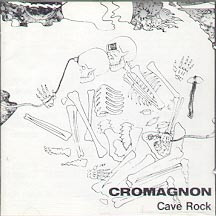 |
2000 Lead vocals and musicians - Austin Grasmere, Brian Eliot Background vocals, music and sounds by "The Connecticut Tribe". Originally released in 1969. |
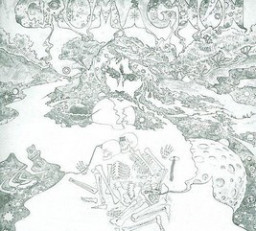 |
2009 Comes in digipak. Recorded 1969 A1 Sound Studio, New York City. Original cover art from the collection of Gregor Kessler. |
|
New CD ESP 2003 Charles Manson / Sings : The Love and Terror Cult Charles Manson visited New York City in the early '60s with his guitar and his songs in a vain search for recognition. In Beverly Hills, famous musicians gave him their studio to produce this album. He has vocal backup from the women of the "family". During a stay in a San Francisco prison, he met a fellow inmate, and gave him the album to release. While Manson was being tried and convicted of participation in the murder spree, the government attempted to discredit the hippie movement by citing him as an example, hoping to defuse the rising tide of anger among the population over the war in Viet Nam. Because his songs were considered musically and historically significant, this record was released briefly by ESP in 1974. For many years, all royalties were paid to the son of one of the victims to fulfill a judgment against Manson. The CD and the download both have 12 bonus tracks. The newly reissued vinyl and cassette tapes have the original 14-song program, but the free downloads that comes with them when you buy here include all the bonus tracks. PersonnelCharles Manson: lead vocals, rhythm guitar, tympani
Recorded: 9/11/67. Overdubs: 8/9/68. Produced by Phil 12258cal. Reissue Engineer: Douglas McGregor. Production Manager: Tom Abbs. Design & layout by Paul Costuros, Miles Bachman & Fumi Tomita. Track Listing: 1. Look at Your Game, Girl 2:00 2. Ego 2:26 3. Mechanical Man 3:15 4. People Say I'm No Good 3:16 5. Home Is Where You're Happy 1:26 6. Arkansas 3:02 7. I'll Never Say Never to Always 0:39 8. Garbage Dump 2:32 9. Don't Do Anything Illegal 2:49 10. Sick City 1:31 11. Cease to Exist 2:10 12. Big Iron Door 1:08 13. I Once Knew a Man 2:31 14. Eyes of a Dreamer 2:32 15. Devil Man 2:30 16. More You Love 1:40 17. Two Pair of Shoes 1:56 18. Maiden with Green Eyes (Remember Me) 1:24 19. Swamp Girl 1:57 Press Quotes"None of these songs are threatening or confrontational; the material is introspective folk-rock and soft rock." - Alex Henderson, All Music Guide "There are moments of undeniable chilly beauty like the female acappella I'll Never Say Never To Always, but there is also some schmaltzy Vegas-styled hokum like Eyes of a Dreamer as well." - George Parsons, Dream Magazine |
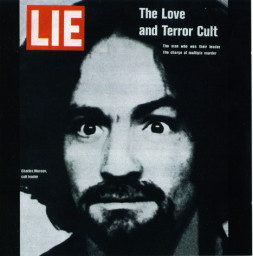 |
|
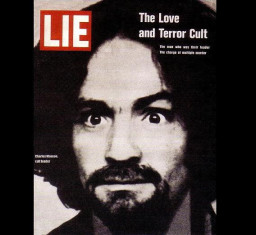 |
|
|
New CD ESP 3007 Revolutionary Ensemble -
Vietnam Debut recording by one of the classic avant-garde groups: the Revolutionary Ensemble. Featuring violinist Leroy Jenkins (formerly a member of the AACM), bassist Sirone and percussionist Jerome Cooper, the group was an early example of chamber music within the avant-garde format, one that emphasized subtlety within its instrumentation (string instruments instead of saxophones) and compositions. The band existed primarily from 1971-1977, building a worldwide reputation as one of the premier avant-garde groups. "Vietnam" was the group's first recording. Personnel Leroy Jenkins: violin, violaSirone: bass, cello Jerome Cooper: percussion Track Listing 1.Vietnam 12.Vietnam 2 NYC, March, 1972 "...this recording imparts the musical uniqueness of multi-reedman Giuseppi Logan's sound." - Lyn Horton, All About Jazz "...a solid, often fascinating set." - Stewart Mason, All Music Guide "Essential listening for progressive-jazz and jazz-improvisation advocates." - Glenn Astarita, Jazz Review |
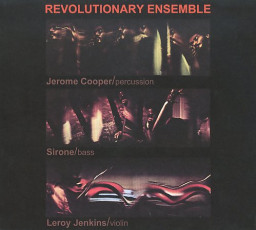 |
2009 Remastered Digipak Originally released in 1972. Recorded at The Peace Church. The liner notes in CD reissue are an excerpt from an interview with Sirone. |
|
New CD ESP 3013 Frank Lowe / Black Beings The CD and download versions of Black Beings contain 15 minutes of additional material thought to have been lost. The vinyl edition is the original edit. PLEASE NOTE: VINYL IS A PRE-ORDER! SHIPPING LATE 2023. APOLOGIES FOR THE LONG WAIT!When he started out on ESP-Disk', Frank Lowe was one of those hard-blowing tenor saxophonists we think of when we heard the phrase "free jazz." Born in Memphis, he moved to San Francisco and, while visiting New York, began playing with Alice Coltrane (on whose albumWorld Galaxy he made his recording debut in 1971), Sun Ra, Rashied Ali, and Noah Howard, and eventually moved to the Big Apple. On his debut as a leader, Lowe was confident enough to share the frontline with the Art Ensemble of Chicago's Joseph Jarman, who sticks to soprano and alto saxes here. This album is also notable as the recording debut of bassist William Parker, who has gone on to become an elder statesman of the genre and a ubiquitous presence on the New York scene. And then there is the mystery of the violinist originally credited only as The Wizard. Speculation long ran rampant, with one eminent jazz critic declaring not only that it was Leroy Jenkins under a pseudonym, but "quite recognizable" as such. Consider that a compliment to Raymond Lee Cheng, whom we now know it to have been; he recorded with Lester Bowie two years later as Raymund Cheng. That is not the only discovery unveiled on ESP's 2008 reissue of this classic. ESP's Michael Anderson went into the vaults and discovered unreleased music that was edited out to fit the time confines of the LP. "In Trane's Name" is now 33:29 rather than 25:00; the Jarman-penned "Thulani" is 22:09 compared to 15:55. One listen quickly reveals that the glory of this album is thoroughly enhanced by the additional music.
Joseph Jarman: soprano, alto sax Compositions by Frank Lowe & Joseph Jarman (Syndicore Music BMI). Credits Recorded March 1973. Engineering by Scott Trusty. Original album design by Carmen Lowe. Original photos by Charles Marinaro. Production Manager: Tom Abbs. Research, restoration & analog to digital transfer by Michael D. Anderson. Digital remastering by Douglas McGregor. Digital imaging by Michael Solomon. Design & layout by Miles Bachman & Michael Sanzone. Press Quotes "Black Beings serves as an historical document and stopping-off point in the musical legacy of Lowe, showing a rare side of the musician. " - Jerry D'Souza, All About Jazz "Essentially just a recording of a live show, Black Beings encapsulates what’s great about improvisation at its very core: harnessing spontaneity in a way that can never be recreated. Aside from stellar, moment-to-moment playing, Black Beings also documents a pivotal time in music. Lowe takes free jazz to its fiercest and rawest states, while remaining deeply invested in the same roots as the previous generation of jazz experimenters. As avant-garde as Black Beings gets, it is indeed pure soul music" - Seth K, Tiny Mix Tapes |
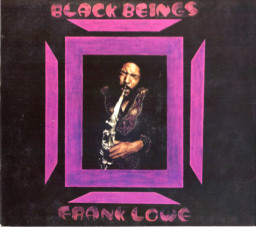 |
|
|
New CD ESP 3026 Ronnie Boykins / The Will Come, Is Now Legendary Sun Ra bassist Ronnie Boykins stepped out on his own for his first and only release as a leader on The Will Come, Is Now. He was invited by ESP in 1964 to record his own album, and in February 1974, he told ESP that he was finally ready, and the session took place later that month. This recording not only features Boykins' solid abilities as a bassist, including his marvelous arco work, but also his talents as a composer and arranger. In addition, one is treated to an all-natural bass sound, a rare sound during this particular era of jazz history. In septet format, Boykins' six originals create a variety of moods and textures that not only evokes the music of Sun Ra but also reflects Boykins' own sensibilities as an artist.
Marzette Watts (engineer) 1.The Will Come, Is Now 2. Starlight at the Wonder Inn 3.Demon's Dance4.Dawn Is Evening, Afternoon 5.Tipping on Heels 6.The Third I All compositions by Ronnie Boykins (Syndicore Music BMI) Credits Engineered by Marzette Watts
Press Quotes Rather than a high-energy screamfest, the selections have loosely arranged sections, a few strong melodies, and the utilization of an interesting seven-piece unit. - Scott Yanow, All Music Guide "Bassist Ronnie Boykins is perhaps best known for his work in Sun Ra's Arkestra, of which he was an intrinsic member for nearly a decade. His inimitable bass style can be heard on all of Ra's most significant recordings, and Ra had a difficult time finding someone to fill Boykins' shoes when he left the Arkestra in 1966. His 1975 self-titled release, featuring all original material, is from his post Ra period and represents one of the last great releases in the ESP-Disk catalogue. Featuring Joe Ferguson on tenor sax and flute, Monty Waters and James Vass on alto and soprano sax, Daoud Haroom on trombone, and Art Lewisand George Avaloz on percussion. Also includes various bells and hand shaken instruments played by all musicians." - Forced Exposure |
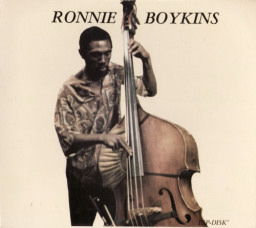 |
|
|
New
CDESP 3028 Michael Gregory Jackson -
Clarity MUSICIANS: LEO SMITH / OLIVER LAKE / DAVID MURRAY / MICHAEL GREGORY JACKSON |
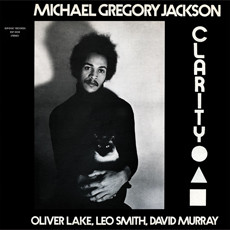 |
|
|
New CD ESP
3033 Sun Ra / Concert For The Comet
Kohoutek "Released in the early '90s, Concert for the Comet Kohoutek captures a typically inspired night by Sun Ra & the Intergalactic Space Research Arkestra. Recorded in late 1973, on this date the Arkestra is guided by a musical theme composed around the idea of the Comet Kohoutek, which was passing close to Earth at the time. Typically, the release vaults between cosmic vocal songs that speak of Truth and other such brashly capitalized affairs (such as "Astro Black"), almost straight-ahead big-band jazz arrangements ("Variations of Kohoutek Themes"), and frighteningly evil free explorations ("Journey Through the Outer Darkness")."-Jesse Jarnow, AMG Personnel Kwame Hadi (tp) Akh Tal Ebah (tp, flh, mel, vo) Dick Griffin or Charles Stephens (tb) James Jacson (basn, fl, Ancient Egyptian Infinity d) Eloe Omoe (bcl, per) Danny Davis (as, fl, per) Marshall Allen (as, ob, fl, per) John Gilmore (ts, per, vo) Danny Ray Thompson (bars, fl, per) Alzo Wright (vln, cello, d) Sun Ra (syn, org, declamation) Ronnie Boykins (b) Thomas "Bugs" Hunter (d) Cheryl Banks, Judith Holton, June Tyson, Space Ethnic Voices, Ruth Wright (dancer, vo) All compositions by Sun Ra (2006 Syndicore Music BMI) Credits Reissue Engineer: Joe Phillips, Wildcat Recordings USA. Recorded live at Town Hall, New York City, December 12, 1973. Back cover layout & design by Paul Costuros.
"Released in the early '90s, Concert for the Comet Kohoutek captures a typically inspired night by Sun Ra & the Intergalactic Space Research Arkestra. Recorded in late 1973, on this date the Arkestra is guided by a musical theme composed around the idea of the Comet Kohoutek, which was passing close to Earth at the time. Typically, the release vaults between cosmic vocal songs that speak of Truth and other such brashly capitalized affairs (such as "Astro Black"), almost straight-ahead big-band jazz arrangements ("Variations of Kohoutek Themes"), and frighteningly evil free explorations ("Journey Through the Outer Darkness")." - Jesse Jarnow, All Music Guide |
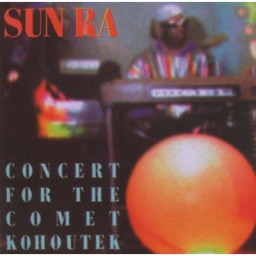 |
|